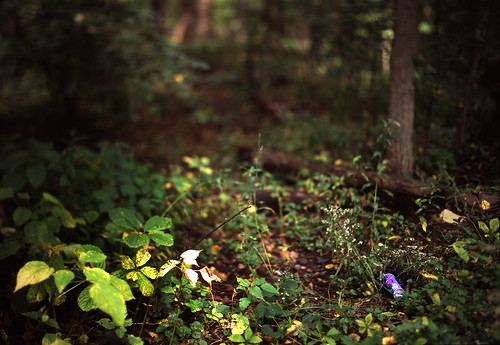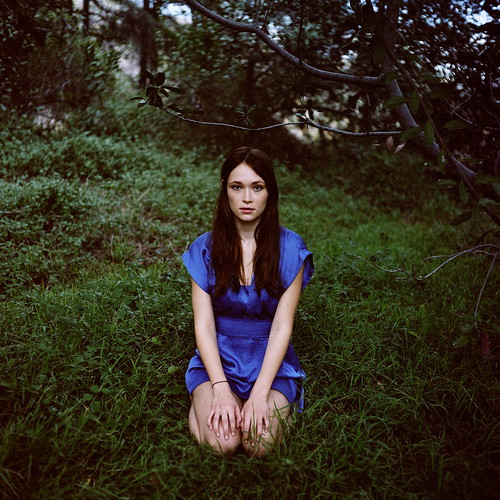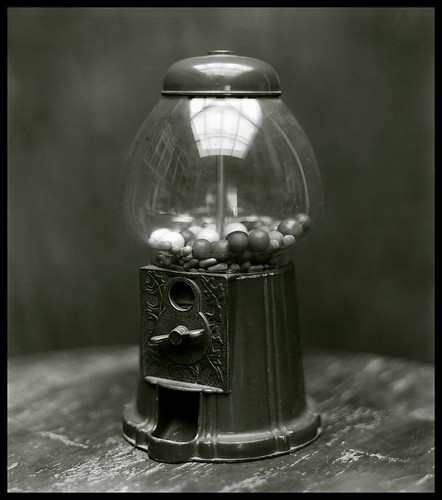
Taken with my Polaroid 110a at f/4.7
For good or bad, shallow depth of field is the attribute of a photograph that typically strikes a viewer as a quality of professional photography. It is also the subject I'm asked most about by lay photographers. I have seen many uses of shallow depth of field when it's inappropriate, and many budding photographers overuse the hell out of it once they figure out what it is, and how to produce it.
First, "depth of field" is a measure of how much of a photograph is in focus from near to far. Shallow depth of field is produced when the focus point is in focus, and that's about it, while deep depth is produced when essentially everything is in focus. It can be affected by many different things: lens aperture, lens focal length, isolation of subject from background, focal distance, and negative or sensor size.
Essentially, depth of field is at its shallowest when the subject is nearer to the camera, the aperture is set wider than say f/2.8, the lens is about 85e or longer, and the camera has a large negative size. Of these factors, one that seems to play a huge role is sensor or negative size; a large negative will always carry a shallower depth of field. This is why you can't get that background to go out of focus on your point and shoot digital camera, even with a wide open aperture. Really, if you want shallow depth of field, the simplest way to get it is to pick up a cheap 1970s mechanical film SLR with a 50mm f/1.8 lens, and go to town.

Sensor/negative size comparison chart
Aperture is important, sure, but a large negative size will prevail over a narrow aperture in many situations. My Polaroid SX-70 has an effective negative size of 3x3 inches, putting it squarely in medium format territory. Its maximum aperture is only f/8.8, but even as such it has a nice shallow depth of field in many situations:

As I mentioned earlier, shallow depth of field is easy to abuse once you know how to use it. If you want to isolate a subject from a background, it's wonderful; if you would like to take a photo of an object receding into the distance, not so much usually. It's also easy to overdo it at a certain point, where your subject is not necessarily entirely in focus, which can become distracting. You can also miss out on a lot of interesting background images if you become too obsessed with shallow depth of field. Finally, I tend to notice that modern lenses, with their ultra-sharp plane of focus, can produce rather ugly effects as focus falls off and the background becomes blurred.
Here are some of my favorites from others and myself:

(Mine - Tilted film plane adds makes the depth even shallower )

One of Lou O'Bedlam's many awesome portraits.

Some of my friend Andy's amazing work with the old Kodak Aero-Ektar lens.
Finally, though I don't show his work in this post, I also highly recommend checking out the photos of Jonathan Hillhouse. His depth of field usage is often incredible.


1 comment:
For more gorgeous examples of selective focus, check out the Moscow photographer Roman Aytmurzin. He shoots most of his work on large format, using various interesting old lenses.
Post a Comment